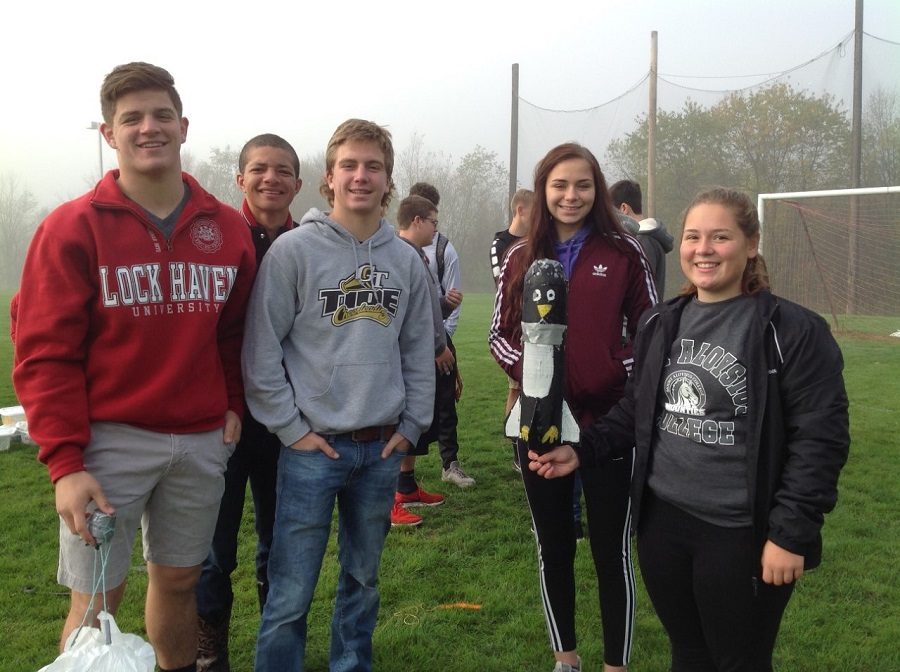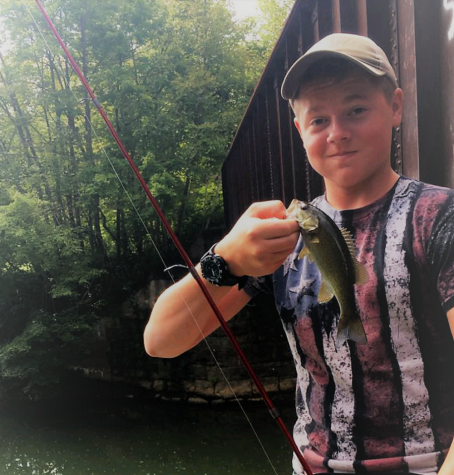New Flight Record Set at Physics Rocket Challenge
Team Flying Penguins set the new flight record in the Physics Water-Air Rocket Challenge. Team members are, from left: Luke Mcgonigal, Jude Pallo, Lexi Shomo, and Sarah Snyder.
December 7, 2017
Each school year, Mr. Barsody’s physics class holds a project known as the “Physics Rocket Challenge”. This project covers all aspects of creating a flyable rocket within a set number of boundaries so that it is truly a challenge for the students who participate in the project.
Mr. Barsody explains, “Teams compete among three events for the overall top cumulative score. This year’s top team was team Hawkeye consisting of Ally Hertlein, Hunter Hipps, Julia Reitz, Riley Paul Cook, Dylan Carfley, and Corey Wingate.”
Mr. Barsody also mentions, “This year we had a new time of flight record of 11.80 seconds (event 2) achieved by the team of Sarah Snyder, Alexis Shomo, Luke McGonigal, and Jude Pallo. They beat the previously held record of 7.68 seconds by successfully deploying a parachute attached to their rocket.”
Along with the results of the challenge, Mr. Barsody included the rules such as, “Rocket Constraints and Inspection: Prior to the first competition, rockets will be submitted for an official inspection. In order to receive entry into in the competition, your rocket must pass the inspection and be within the specification limits as listed below.”
- Material Design: The tubular-body of the rocket, which holds water and air, must be constructed only out of two-liter plastic bottles. Splicing bottles together is prohibited. The fins of the rocket must be constructed from cardboard, or if approved by the teacher, a good substitute material (an example of a bad substitute is metal from pop cans). The nose cone must be constructed out of cardboard, bottle plastic, or teacher approved material (e.g., spray foam nosecone). Glue or tape must be used to attach parts of the rocket to one another. Safe materials, such as a tennis ball or clay, are acceptable to be used as a ballast weight. Metal and/or metal-like materials are prohibited, as are any other materials deemed unsafe by the teacher—if in doubt, ask for permission first! Don’t make assumptions.
- Nose-to-nozzle Length: Measured from the nose-tip to the nozzle, this distance can be no larger than 25.0 inches (63.5 cm). No parts of the rocket (e.g. skirt, fins) may extend beyond this distance.
- Body Tube Diameter: The body diameter must be less than 8.00 inches (20.3 cm) at all positions not including the fins. Two-liter bottles are approximately 4.50 inches (11.4 cm) in diameter. The body diameter is calculated from the measurement of the body circumference using a piece of string.


